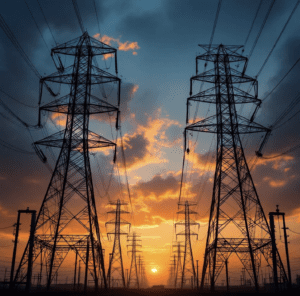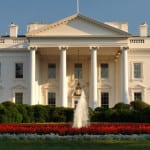The U.S. Environmental Protection Agency (EPA), Department of Army, and Army Corps of Engineers have proposed a rule to rescind the controversial Waters of the U.S. (WOTUS) rule, which asserts federal authority over small bodies of water.
The rule, also known as the “Clean Water Rule,” was promulgated by the EPA and the U.S. Army Corps of Engineers in June 2015 in a bid to protect streams and wetlands from pollution and degradation. But it is widely regarded as contentious because it broadly defines the scope of “waters of the U.S.” that are subject to federal regulation.
The agencies’ rule proposed on June 27 would essentially recodify the 2015 Clean Water Rule with regulatory text that was adopted in 2008, and which remains in place after the U.S. Court of Appeals for the Sixth Circuit stayed the rule in October 2015. “Therefore, this action, when final, will not change current practice with respect to how the definition applies,” the EPA said in a statement on June 27.
The proposed rule is the first of two actions anticipated by the EPA to redefine “waters of the U.S,” the EPA said. While the agency did not note a timeline for the second action, it said that when finalized, the rule would “provide certainty in the interim.”
A Contentious Rule
At least 31 states and 52 non-state parties—including local governments and private industry—had challenged the Obama-era rule in multiple courts, arguing that it violates the 10th Amendment’s federalism principles and that it exceeds the Constitution’s commerce clause. EPA Administrator Scott Pruitt led legal challenges to the rule as Oklahoma’s former attorney general.
The Sixth Circuit eventually stayed the rule on October 9, 2015, ruling that petitioners had demonstrated a “substantial possibility of success on the merits of their claims,” including that the rule’s treatment of tributaries, “adjacent waters,” and waters having a “significant nexus” to navigable waters is at odds with a U.S. Supreme Court ruling, where the high court vacated the Sixth Circuit’s upholding of wetlands regulation by the Army Corps of Engineers.
The Supreme Court in February 2016, meanwhile, also agreed to review the Sixth Circuit’s February 2016 decision on jurisdictional matters related to the case, and it is expected to hear oral arguments in National Association of Manufacturers (NAM) v. Dept. of Defense et. al. in its upcoming fall term. According to law firm Hunton & Williams, “If the Supreme Court sides with petitioners and determines that district courts are the appropriate venue for challenges to the 2015 rule—and therefore that the Sixth Circuit does not have jurisdiction over the challenges—the nationwide stay issued by the Sixth Circuit would be lifted.”
The law firm noted that uncertainty of the nationwide stay is one likely reason for the EPA’s two-part process to repeal the 2015 rule.
The EPA, Army Corps, and Army on June 27 noted that deliberations and outreach have begun on the second step rulemaking involving a re-evaluation and revision of the definition of “waters of the United States.” The second step will be in accordance with an executive order signed by President Trump in February, which called on the EPA administrator and the assistant secretary of the Army of Civil Works to review or rescind the final rule.
Litigation Almost Certain
While the EPA had been widely expected to propose a rule to rescind the WOTUS rule, industry experts hadn’t expected the proposal to come so soon.
However, according to Thaddeus Lightfoot, a partner at the international law firm Dorsey & Whitney, litigation is certain to continue. “Of course, any replacement for the WOTUS rule will be subject to challenge in the courts,” he said in a statement to POWER. “In the short term, the WOTUS rule remains under a nationwide stay. EPA and the Corps will continue to make determinations regarding the ‘waters of the United States’ using Justice Kennedy’s significant nexus test without applying the WOTUS rule, just as they have since 2006. A rule applying Justice Scalia’s narrower test could be years away and will be fiercely litigated upon arrival.”
The Clean Water Act, enacted in 1972, granted the federal government broad powers to limit pollution in so-called “navigable” waterways like the Great Lakes, and the Ohio and Mississippi rivers. However, as it promulgated the WOTUS rule in 2015, the EPA noted that a pair of Supreme Court decisions in 2001 and 2006 made it unclear whether the act also covered smaller bodies like groundwater, headwaters, streams, and wetlands that feed those larger waterways.
The agency had then said that it had for a decade—starting in the George W. Bush administration—received requests from members of Congress, state and local officials, industry, agriculture, environmental groups, scientists, and the public for a rulemaking that would clearly define and protect tributaries that impact the health of downstream waters.
Power generators, manufacturers, farmers, and Republican legislators have pushed back against the rule. The National Association of Manufacturers, for example, says the rule is another regulatory burden that expands the federal government’s reach into manufacturers’ onsite activities.
Electric utilities have expressed concerns that water near plants, such as water drainage ditches and cooling ponds, may be considered U.S. waters. According to the Nuclear Energy Institute, the rule will create “significant practical problems” for companies operating nuclear power plants and planning new facilities.
On June 27, the Edison Electric Institute (EEI)—the association that represents all investor-owned power companies in the U.S.—lauded the agencies’ move to rescind the rule. “By rescinding the problematic Waters of the United States (WOTUS) rule, EPA Administrator Pruitt and the Army Corps of Engineers have taken an important step to reconsider a rule that, if left unchanged, would have triggered substantial new regulatory requirements for critical electric company operations, creating substantial compliance costs,” said EEI President Tom Kuhn.
The power sector supports the new rulemaking that “more clearly and narrowly defines which waterbodies are subject to federal jurisdiction, and enhances opportunities to streamline energy infrastructure permitting,” Kuhn added.
—Sonal Patel is a POWER associate editor (@sonalcpatel, @POWERmagazine)










